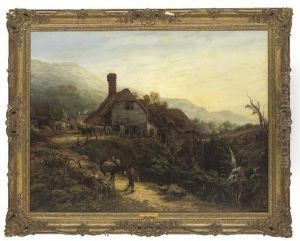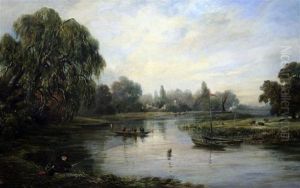Harriett Gouldsmith Paintings
Harriett Gouldsmith was a British artist born in 1787 in London. She was known for her landscapes and was a contemporary of the great landscape painters of the early 19th century. Gouldsmith was a pioneering female artist at a time when the art world was dominated by men, and she managed to achieve recognition for her work despite the gender biases of her era.
She was initially trained by the landscape painter John Varley, and her work was influenced by the picturesque movement, which emphasized the rustic and idyllic aspects of the countryside. Gouldsmith's landscapes often featured scenes from the English and Welsh countryside, where she spent much of her time sketching and painting. She was adept in both watercolors and oils, and her works were characterized by their detailed naturalism and use of light.
Despite the challenges she faced as a woman in the arts, Gouldsmith was an active and respected member of the artistic community. She exhibited regularly at the Royal Academy from 1811 to 1821 and later at the British Institution and the Society of British Artists. In addition to her painting, Gouldsmith was also an author and published a book titled 'Lectures on Landscape Painting' in 1836, which was one of the early instructional texts on the subject.
Throughout her career, Gouldsmith advocated for the professional acceptance of female artists and was a member of the Female School of Art, an institution that aimed to provide art education to women. She remained professionally active until her death in 1863. Harriett Gouldsmith's legacy is that of a trailblazer who helped pave the way for future generations of female artists.

